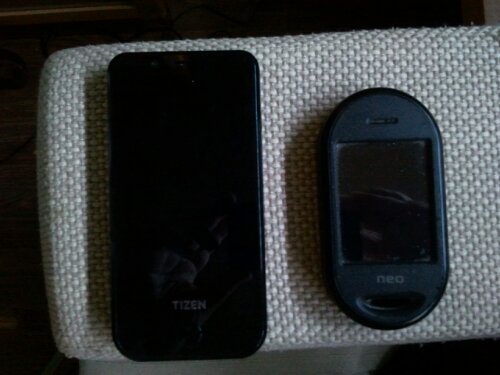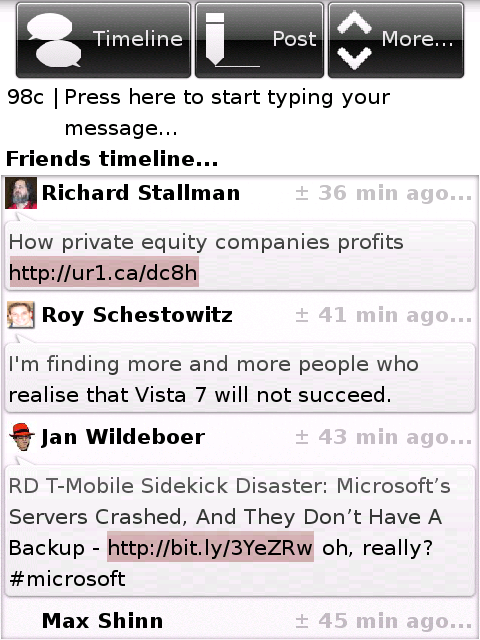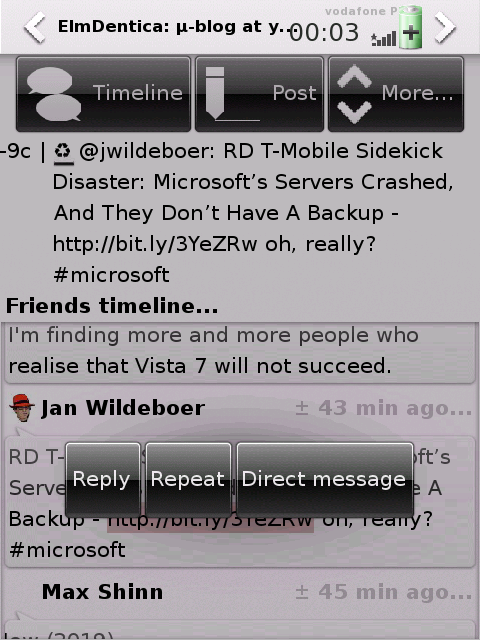Remember when Nokia wanted to give a lesson regarding software patents to Free Software people? Like «they’re ‘m’kay? We know best, m’kay?»
Well, I was really anxious about the Nokia N900, the 4th Nokia GNU/Linux internet device which now has the ability to make phone calls! It’s an impressive device… cell phone (3G, yay), camera with enough resolution, GPS, wifi, decent graphics card, powerful processor, a half-decent amount of memory, more than decent storage, etc…
It is also being branded as so “open” that software freedom lovers would love it. This seemed like really good news, no? Well, like the saying goes… when it’s too good to be true… it most probably ain’t.
I tried to figure out how “open” the device is, and wasn’t really happy. After more than 70 comments, Quim (who works at Nokia) spills the guts:
Nobody claims Maemo is the 100% free mobile OS and the N900 is the 100% free mobile device. I claim is currently the most interesting combination for a free software lover thanks to its standard Linux stack, possibility to modify the platform and access to the root. The % closed helps Nokia getting a sustainable business model and reaching consumer appeal.
Well, nice claim, but it is the idea that you (and Nokia) are selling. And worse of all, you seem to pretend that in 100% of an operating system, all % are of equal value. They’re not. The minimum percentage that is proprietary is essential for Nokia’s GNU/Linux devices to work. Take it away, and they won’t work, or might even burn in your pocket. Period.
If 100% freedom is your goal Maemo 5 and N900 is a good starting point.
No it’s not. There’s better if you want 100% freedom, what OpenMoko started. The company may now only be selling Freerunners to resellers who want to keep on with the business, but there’s new sources of hardware showing up (thanks go mainly to John ‘MadDog’ Hall who’s been in talks with the University of São Paulo, in Brasil), so no, the phone is not dead. It is actually growing a lot better and faster now it’s free from the corporate strings of OpenMoko, which partly restricted the flow of things.
But I digress, let’s get back to Nokia and its bullshit and insults to the Free Software community (I use Free Software because I prefer to talk about freedom, but these insults and bulshit also apply to you, Open Source guys, so pay attention).
There’s a wiki page in Maemo explaining why there are some proprietary software. That page needs to be passed by the bullshit filter, like I said in my comment, Nokia is far from being friendly to Free Software. They’re actually quite aggressive and strongly lobby for the legalization of software patents in Europe. Don’t be fooled by the sugar coating, they are not your friend. So what is in the wiki page after you pass the bullshit filter?
-
Brand We think that “open source” reduces our brand value
-
Differentiation Proprietary software is much better, just use it
-
Legacy We don’t want to be shamed by the garbage we forcefeed upon you
-
IPR & licensing issues Software Patents are good, just buy the freaking licenses from us.
-
Security Since we sell dangerous products, we take your freedom away so you don’t make the mistake of getting proof they’re crap (like their batteries, which the phones must know the limits of)
-
Third party Just accept that we know best and choose from the best
While the “security” aspect could be of some value for some people, let me give you an example of how much crap it is:
Nokia’s batteries are dumb. So dumb, in fact, that their phones have to know what batteries they carry in order to not overcharge.
What if the battery was smarter, and had a way to tell the operating system it’s full? If a little company like OpenMoko had it, why wouldn’t Nokia have it? It’s one of the most dangerous equipments in the phone, so I guess that’s what they refer to when they talk about security and some of the energy related software is *closed*.
That’s evidence of crappy hardware.
Sorry, disappointing. Will wait for the competition unless this changes.
BTW, someone said that even OpenMoko has some proprietary software… well, as Mickey Laurer explained it…
«There’s a difference between closed firmware providing a standard protocol and a proprietary ASIC providing a closed-source binary driver using a proprietary command language to talk to the hardware.
None of the Nxx tablets are fully functional with free software. The FreeRunner is.»
Indeed it is!
root@om-gta02 ~ $ cat /proc/sys/kernel/tainted
0
So there you go! There’s much better, in terms of freedom, so don’t settle for less just because it’s fancier.
Demand more! It’s your right as a software user, and your power as a consumer.






